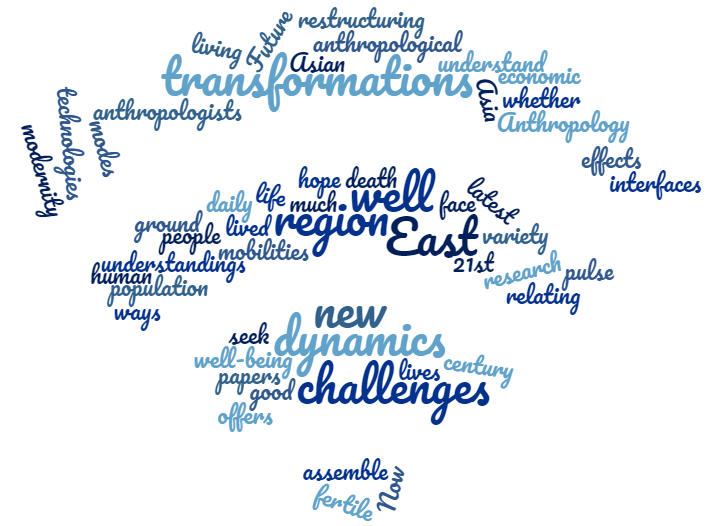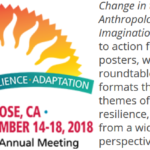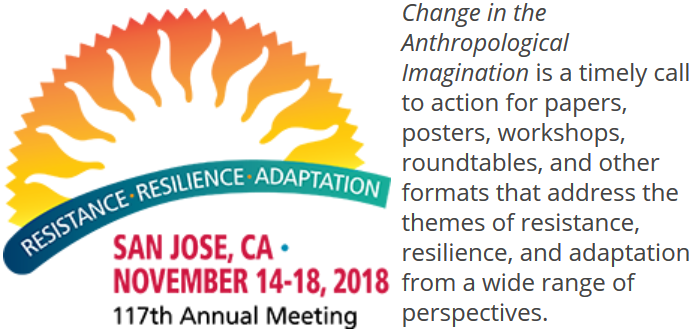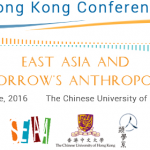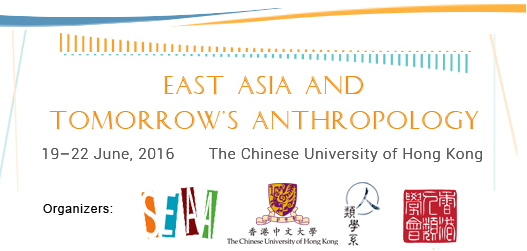George Floyd. Ahmaud Arbery. Breonna Taylor. Rayshard Jones. Elijah McClain. Walter Scott. Eric Garner. Philando Castile. Alton Sterling. Michael Brown. Trayvon Martin. Tamir Rice. Riah Milton. Dominique Fells. Sandra Bland. Freddie Gray…We will say their names.
The nation is on fire, literally and figuratively, demanding justice for the many black men, women and even children dying at the hands of the police. The Society for East Asian Anthropology adds its voice to this powerful chorus against anti-black violence and systemic racism in the United States. We stand with Black Lives Matter in condemning brutality by the police and others in positions of power against African-American citizens. And we support the statement of the Association of Black Anthropologists.
In his dying moments during his encounter with the Minneapolis police, George Floyd, like Elijah McClain, Eric Garner and scores of others before them, pleaded, “I can’t breathe.” In trying to understand the common experiences of these black men and women as the victims of state violence in the United States, we see them as linked to the victims of similar acts of violence around the world. The SEAA is committed to trying to understand these national and international connections in the context of our own vocational endeavor. The SEAA understands that racism manifests itself in America in some ways that are different from but, in others, tragically consistent with those we witness in East Asia. In both contexts, deep-seated racism and ethnocentrism motivate the often state-sponsored oppression of minority peoples. The genocide of Uyghurs and persecution of Tibetans and other ethnic and religious groups in China; discrimination against Korean, Chinese, Ainu, Okinawan, burakumin, mixed-race and other minorities in Japan; the xenophobic animus directed towards foreign residents in South Korea: all bear witness to this reality. As ethnographers, our recognition of these realities, and our interrogation of them, are inflected according to the uniqueness of the sociocultural, political and historical dynamics of each context. They are further complicated by an intersectional appreciation of how racial and ethnic discrimination are cross-cut by class, gender, sexual orientation and other vectors of social identity and difference in the region, as can be seen, for example, by the post-WWII American military domination of East and Southeast Asia—the empire without colonies—and its consequences in the Philippine, Okinawan, and Korean camp-towns. The post-WWII American militarism in Asia augmented sexual oppression and violence directed against women in Asian countries, which cannot be separated from racial domination, yet it comes with underlining complexity. For instance, we need to address the mass rape and sexual violence committed by the Japanese military against Asian women in the 1930s and 1940s, while we must not set aside mass rape and sexual violence committed by Korean soldiers deployed in Vietnam. It is no coincidence that the African Americans were disproportionately drafted and killed in the Vietnam War. Transitional justice for unresolved violent past in varying frames of colonialism, military occupation and domination, and nationalism, predicated on racial and sexual discrimination and dehumanization of others still lies ahead and it is our responsibility, as scholars, to critically think about race and racism in East Asia in close proximity with what is happening in the US today.
One key way in which the SEAA enters into dialogue with the Black Lives Matter movement, then, is through recognition of the consistent ways in which discrimination operates within both the African and Asian diasporas, and in the intersections of the two. The scars of colonialism, occupation and other forms of white supremacist domination, so visible in the U.S. today, are also visible in Japan, China and Korea, refuting a persistent and pernicious mythology of the irrelevance of race in East Asia. The biopolitical management of black bodies on slave ships, on plantations, in inner cities and in the American prison system in some ways echo the incarceration of Uyghurs in “re-education camps” in Xinjiang. Reports of the forced sterilization of Uyghur women today echo that of Puerto Rican women between the 1930s and the 1970s. The discrimination faced by Africans in China, racially stigmatized as carriers of the novel coronavirus, echoes the white racist abuse hurled at Asian-Americans accused of spreading the “Kung Flu”. The frictions between Korean Americans and African Americans during the Rodney King uprisings, which witnessed the destruction of Korean American businesses in African American communities, or the seeming indifference of Hmong American police officer Tou Thao as George Floyd died, index existing or even create new rifts between the two sets of communities.
The SEAA seeks to enter into dialogue with the Black Lives Matter movement not only by recognizing those tensions within the Afro-Asian encounter but also potential solidarities. These potential solidarities stand on the firm historical ground, for instance, of the Bandung Conference of 1955, in which newly-born Afro-Asian states met in Indonesia to chart their collective futures. They are also seen in the work of such civil rights activists as Yuri Kochiyama, who spent the early part of her life at a Japanese-American internment camp—another example of America’s biopolitical management of suspect non-white bodies—and who, later in her career as a civil rights activist, stood in solidarity with Malcolm X; or in the intellectual corpus of W.E.B. Du Bois who engaged with relations between Asia and Africa. In the present moment, these solidarities have emerged in perhaps unexpected ways. K-pop boyband BTS, which has drawn on traditions of African-American musical production and performance, gave $1 million to BLM, a figure BTS fans have matched. Thousands of protestors—Japanese, white and other allies and black people themselves—have marched through the streets of Tokyo and Osaka chanting, “No Justice, No Peace” and “Black Lives Matter.” Afro-Asian frictions but also solidarities are understood as part of the global political landscape to which the Black Lives Matter movement now belongs.
In order to bring our scholarship more fully to bear on these realities old and new, the SEAA will strive to be critically conscious of and fight against racial prejudice through its research and organizational practice. We consider this one way to express our solidarity with the fight against systemic racism in this country, and the insidious forms this racism may take within academic societies such as our own. To address these concerns, the SEAA members pledge:
- To organize a round-table discussion on race and racism in Asia in the next annual meeting of the American Anthropological Association, with similar discussions potentially held on a regular basis in future meetings.
- To promote the participation of African American and other African diasporic peoples in their anthropological research of East Asia in our home departments and institutions.
- To consciously promote the participation of other racial and ethnic groups traditionally under-represented in the anthropological study of East Asia. These include Latinx and Native American peoples and perspectives. For instance, the SEAA recognizes that a Latinx-Asian scholarship that traverses Latin America and East Asia, or the comparative study of global indigeneities (Native Americans, Taiwanese aboriginal groups, and the Ainu of Japan, for instance), might represent rich arenas for further scholarly research and another dimension of the global solidarity against racial discrimination.
- To promote research and other forms of scholarly reflection comparing the complicities between the colonial and anthropological enterprises as commonly reflected in the African and Asian diasporic experiences.
- To create a culture of inclusion in the SEAA as well as in the home departments and institutions of all members. This includes addressing how white supremacy operates within our Society and in East Asian Studies generally. It includes recognizing how Euro-American epistemologies dominate the discipline, in ways that potentially crowd out other approaches to understanding and exploring the region and its peoples.
- To support lectures, film screenings, and other public events by scholars and artists whose work center on the exchanges between African and Asian diasporic peoples, especially those works that bear an anti-racist concern.
- To encourage and facilitate an ongoing exchange amongst our members in order to develop inclusive syllabi, reading lists, and relevant materials and where possible, create a repository of such materials on the SEAA website.
*download the PDF of the Statement for easier printing (save file as…).

